Amidst the evolving urban landscape, three notable architectural projects share a common focus on creating dynamic workspaces that seamlessly integrate with their surroundings. Each building is designed not just as a place to work, but as a vibrant hub that fosters community interaction and collaboration. With thoughtful consideration of their respective contexts, these projects enhance local identity and accessibility, transforming former industrial sites and high-rises into inspiring environments for creativity and innovation.


Second Home London Fields by Cano Lasso (also header image)
Designed by Madrid-based studio Cano Lasso, the design of Second Home’s East London branch features a bold and innovative approach, with its translucent EFTE facade punctuated by circular openings that create a playful interaction with light and space. Inspired by the tensile structures of architect Frei Otto, this membrane not only serves as a striking visual element but also optimizes natural light while providing a sense of privacy and intimacy within the co-working areas.

Second Home London Fields by Cano Lasso
Located in Hackney, a vibrant and transforming area of East London, Second Home includes various amenities like a nursery, café, and multi-purpose spaces, promoting community engagement. The project also adapts the site of the former Morly House theatre, which has undergone significant changes since its bombing during World War II.


Second Home London Fields by Cano Lasso
The building’s interior layout is carefully crafted to foster collaboration and creativity. It includes open workspaces, private meeting rooms, and flexible event areas that cater to a variety of professional needs. A central hub acts as a communal area, encouraging social interaction among members, while quiet zones provide focused environments for individual work.
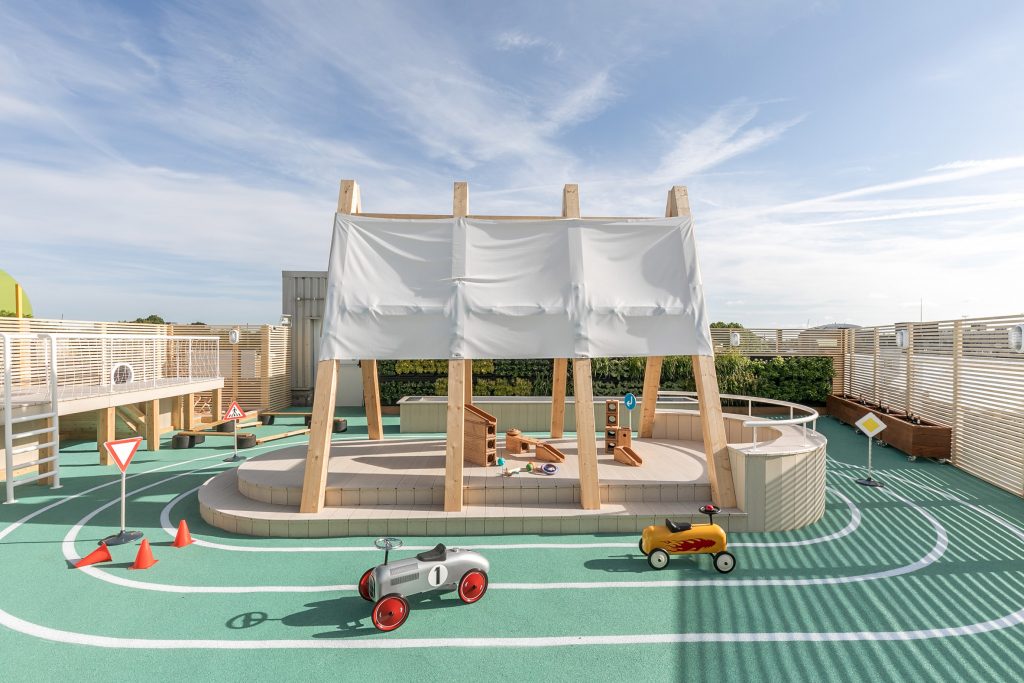
Second Home London Fields by Cano Lasso
In addition to the co-working spaces, the design incorporates essential amenities such as a nursery and an outdoor play area, reflecting Second Home’s commitment to supporting families and the local community. The nursery is thoughtfully integrated, providing a safe and engaging environment for children, which allows parents to work nearby.
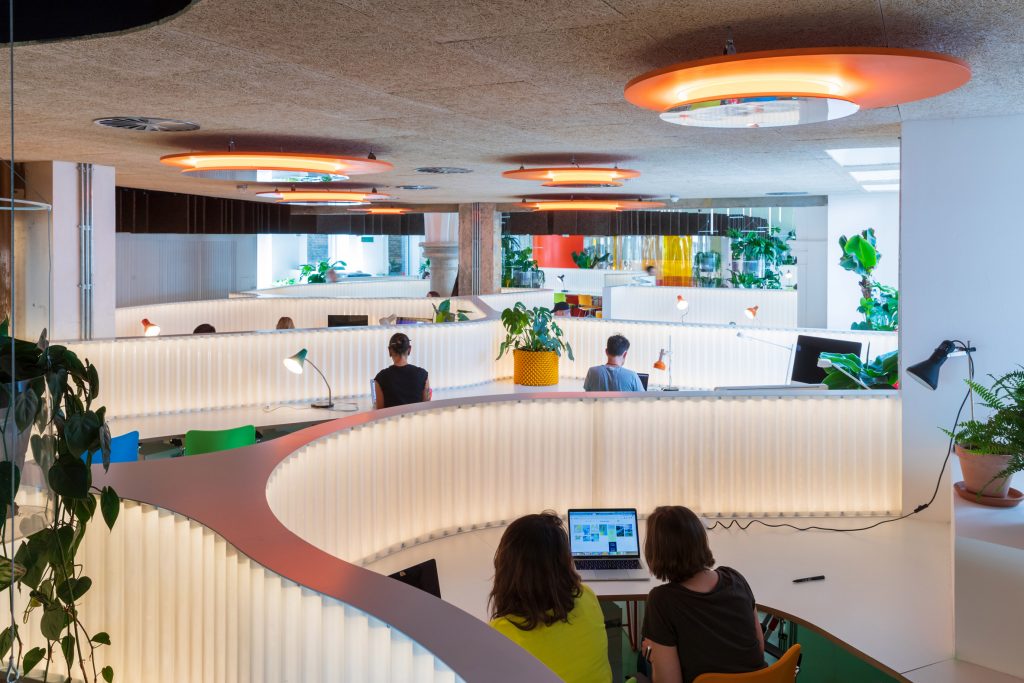
Second Home London Fields by Cano Lasso
The use of materials is intentional and innovative. The EFTE facade is lightweight yet durable, offering excellent thermal insulation and resistance to environmental factors. Inside, natural wood and soft finishes create a warm and inviting atmosphere, balancing the modern exterior with comfort. The incorporation of greenery throughout the space enhances the connection to nature, aligning with Hackney’s growing emphasis on sustainability and well-being.

Second Home London Fields by Cano Lasso
Overall, the design of Second Home London Fields not only transforms the site but also embodies the spirit of the local community, making it a hub for creativity, collaboration, and innovation.

Pong by Calq and Bond Society
Pong co-working and co-living space in Paris is a striking transformation of a 1974 high-rise originally designed by architect Marcel Roux. French architecture studios Calq and Bond Society retained much of the building’s distinctive prefabricated concrete facade, aiming to minimize demolition in line with sustainability goals. This approach underscores the studios’ commitment to decarbonization by breathing new life into 20th-century architecture.

Pong by Calq and Bond Society
The building spans 7,950 square meters and comprises three main volumes: a tower for co-living spaces, a horizontal base for co-working, and a ground floor with public amenities. The facade features recessed storeys wrapped in glazing, creating a visual and structural separation between these elements while enhancing the overall aesthetic.
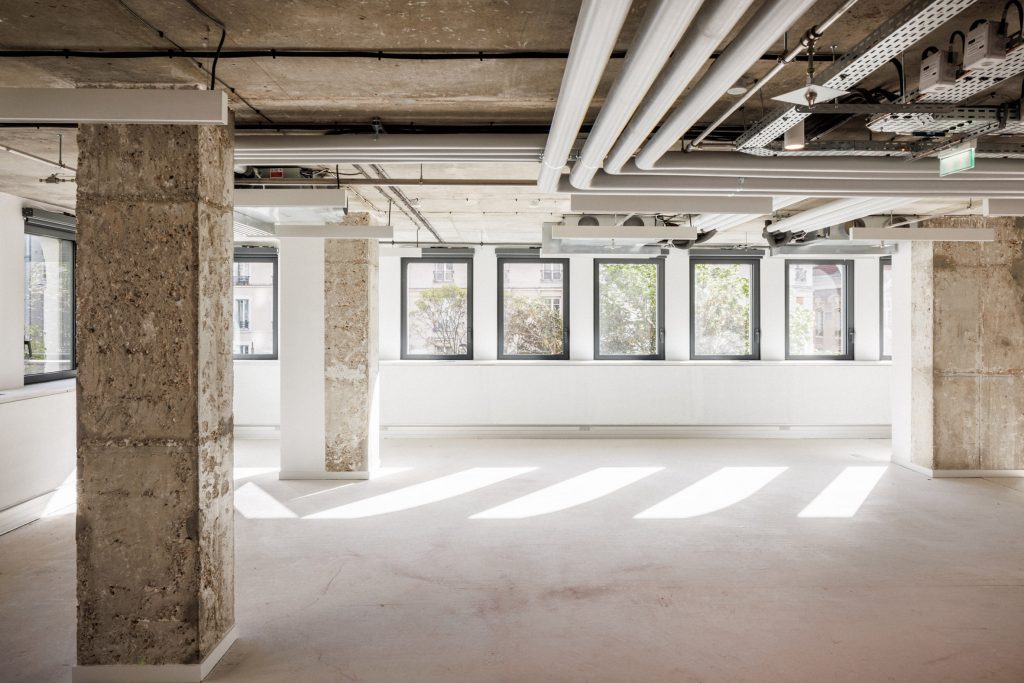
Pong by Calq and Bond Society
On the ground floor, a café and hall welcome visitors, while the basement hosts a double-height sports facility, reinforcing the connection between the building and the city. A separate entrance hall maintains privacy for residents and co-workers, with a centralized circulation core that efficiently connects all levels.
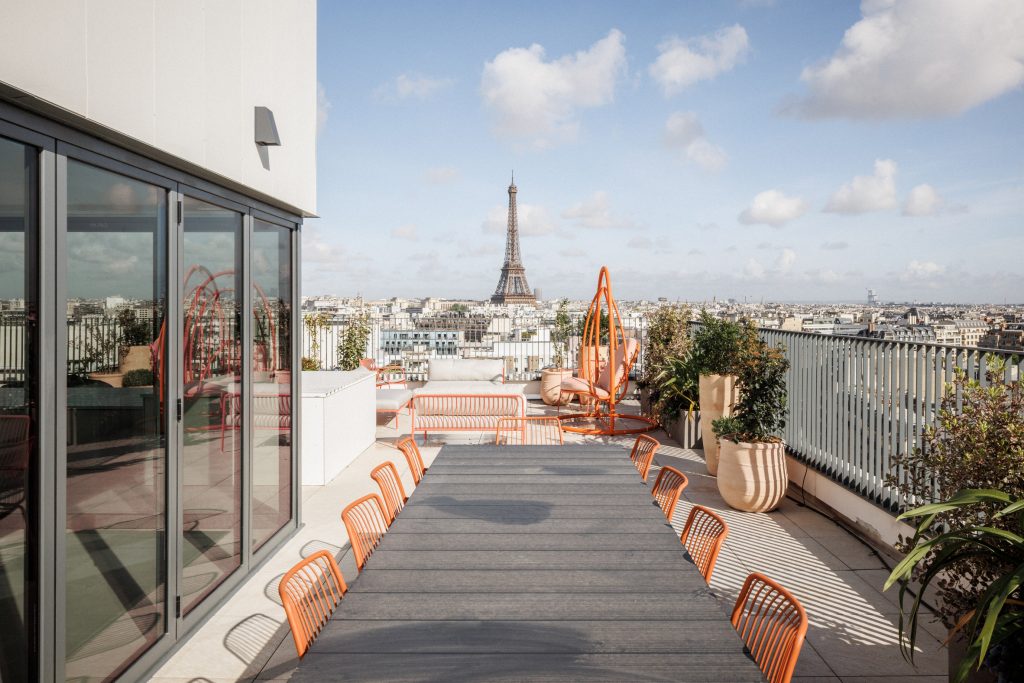
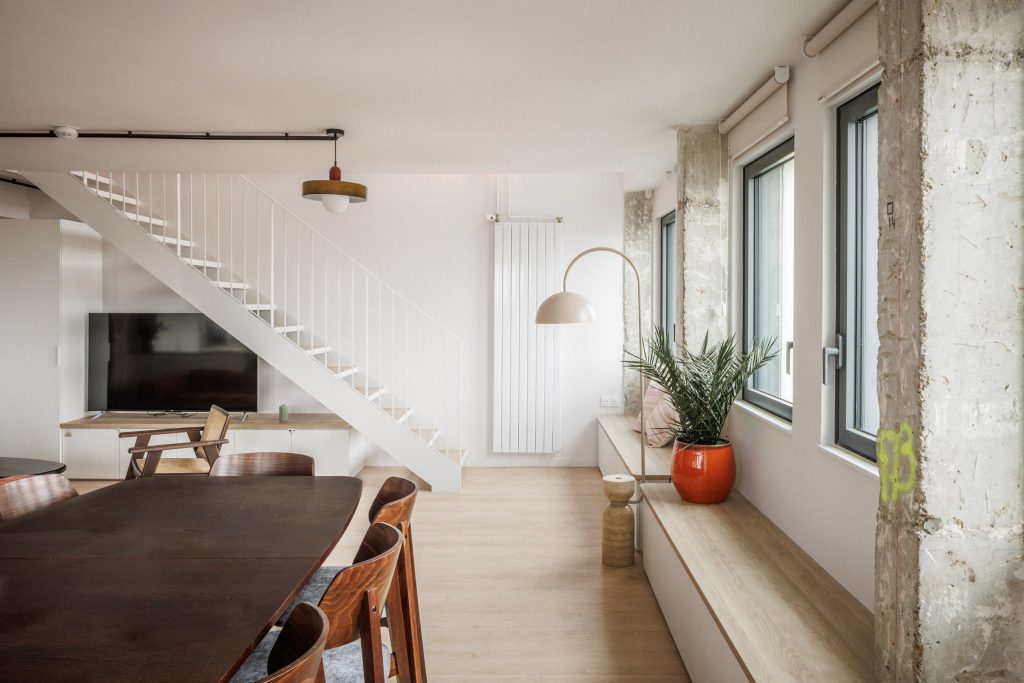
Pong by Calq and Bond Society
Above the ground floor, four levels are dedicated to co-working, featuring a variety of office sizes and meeting rooms, complemented by a spacious external terrace. Eight floors above accommodate co-living spaces, with eight duplex flats containing 12 bedrooms each, centered around a shared living area with a double-height loggia. Developed by the start-up Colonies, these flats range from 16 to 32 square meters and include custom-made furniture by Bond Society, along with a private roof terrace for outdoor relaxation.

Pong by Calq and Bond Society
The interior design embraces exposed concrete, creating a cohesive aesthetic across the different programs. Over 800 windows allow natural light to permeate the spaces, enhancing the environment. The original blue color of the 1974 facade is echoed in the staircases and co-living areas, providing a nod to the building’s history.
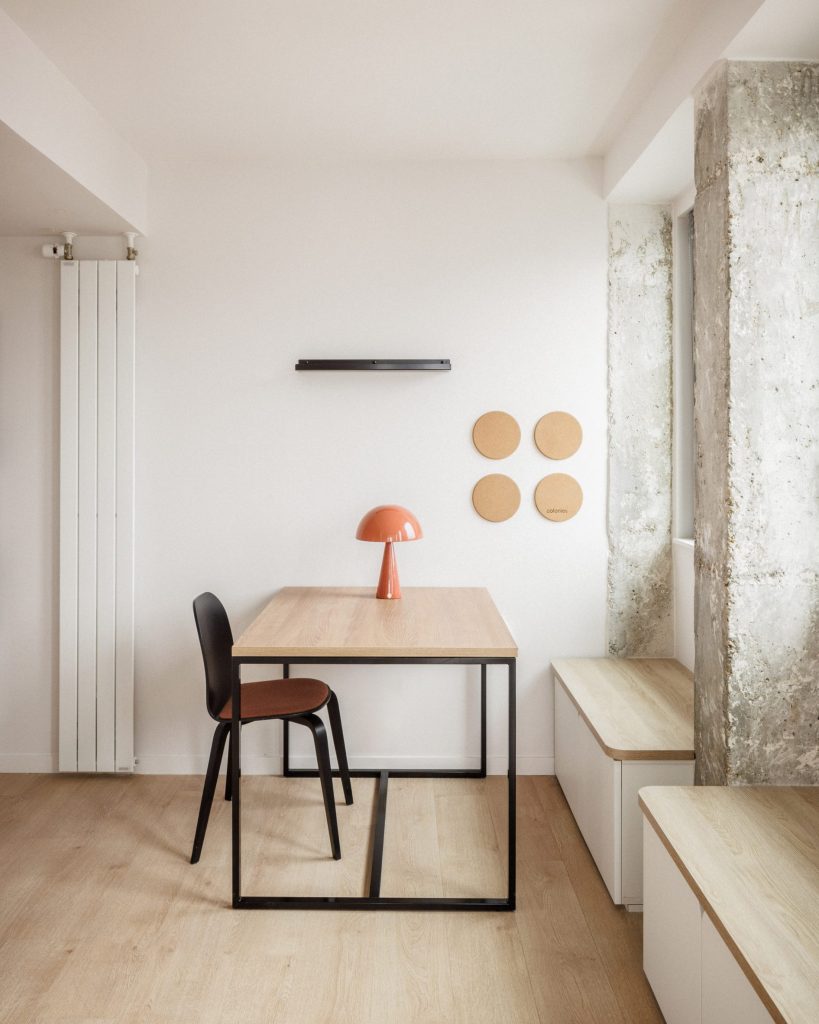
Pong by Calq and Bond Society
Overall, the dialogue between materials—concrete, metal, and glass—reveals the building’s past while integrating modern functionality, making Pong a vibrant hub for both work and living in Paris.
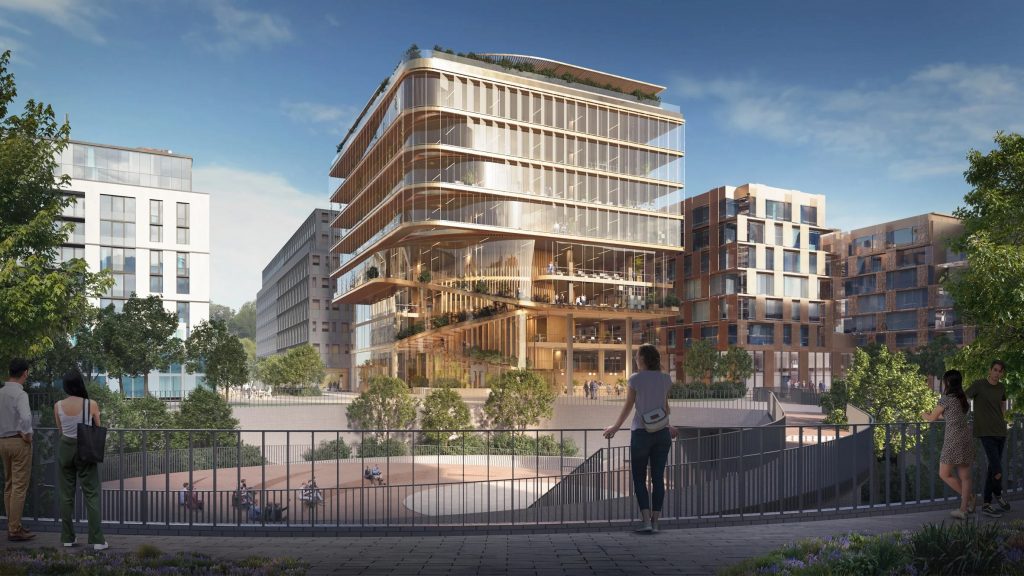
Kyklos building by UNStudio and HYP Architects
The Kyklos building, designed by Dutch architecture firm UNStudio in collaboration with HYP Architects, is set to be a flagship mixed-use office building in Belval, Luxembourg. With a focus on sustainability, the design employs a hybrid construction method that combines concrete and 100% recycled steel. This approach is guided by UNStudio’s innovative “carbon builder” tool, which allows designers to assess and optimize carbon footprints early in the design process.
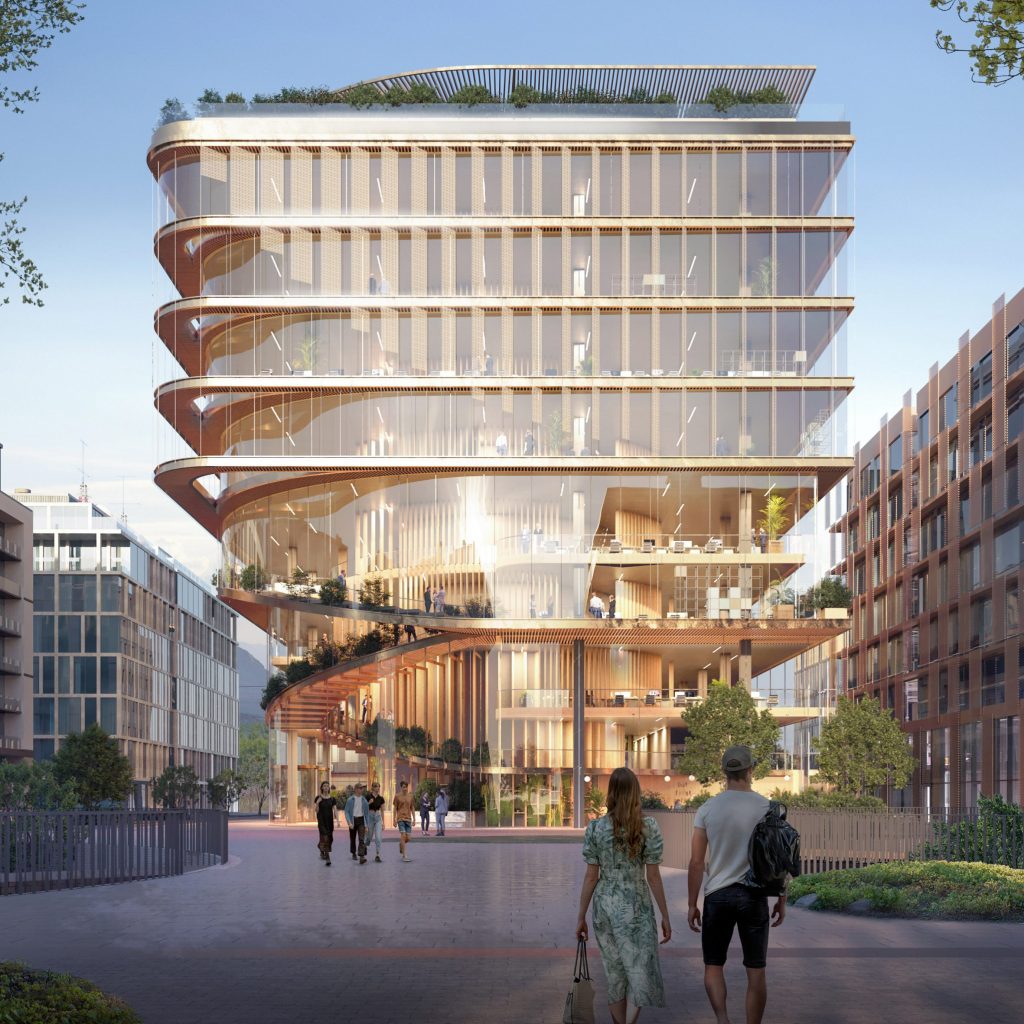
Kyklos building by UNStudio and HYP Architects
The Kyklos building aims to achieve an 80% smaller embodied carbon footprint compared to traditional office buildings in Luxembourg. This sustainability-focused design reflects a broader commitment to reducing environmental impact, demonstrating that timber is not always the optimal choice for carbon performance.
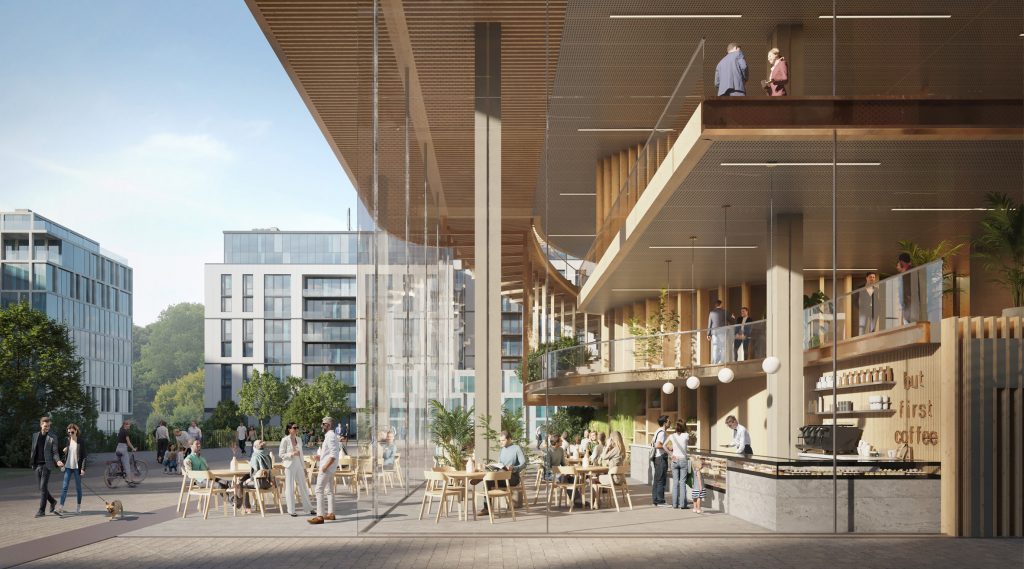
Kyklos building by UNStudio and HYP Architects
As the centerpiece of the Belval masterplan—a redevelopment initiative transforming an old industrial site into a vibrant urban center—Kyklos will integrate office spaces with a basement level and public amenities. The building will feature eight floors of office space, with a ground floor that includes a welcoming lobby and commercial areas accessible to both office users and the public.
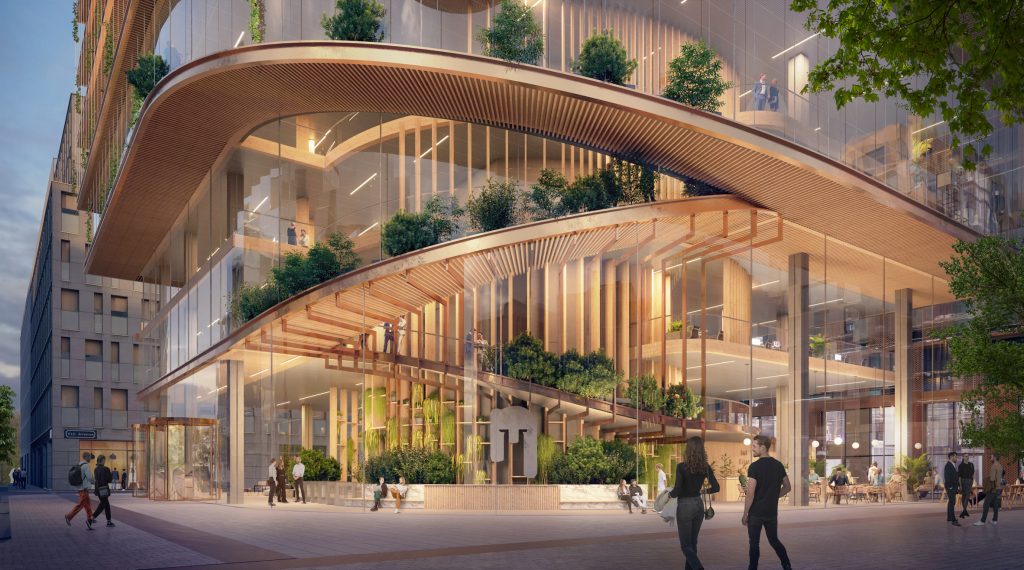
Kyklos building by UNStudio and HYP Architects
The structure’s innovative design includes floor plates that branch from a central circular core and are suspended by steel cables, minimizing the need for load-bearing columns and maximizing usable space. A large, curved staircase spirals around the glass facade, enhancing internal circulation and providing visual connectivity to the nearby Place des Bassins.
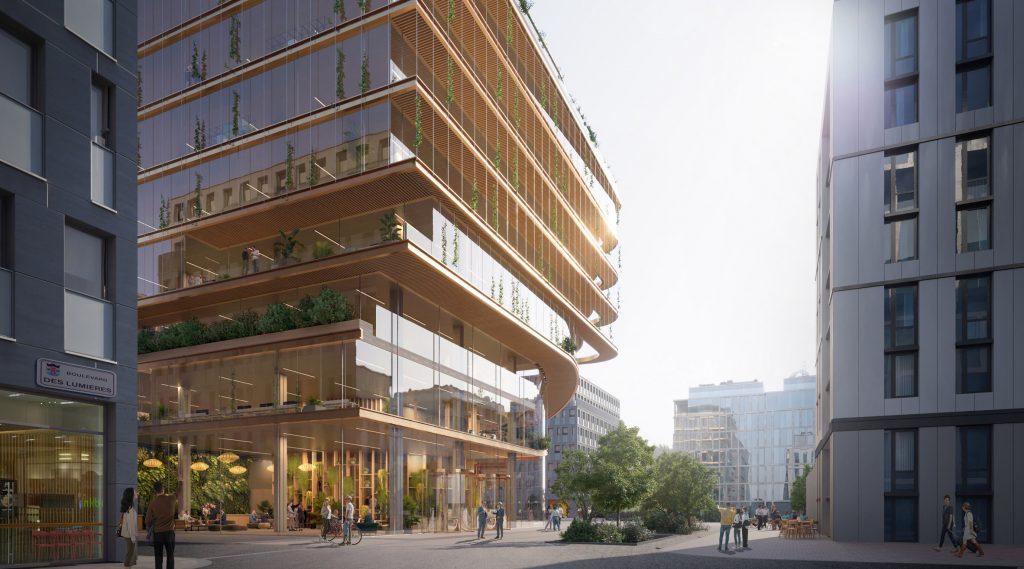
Kyklos building by UNStudio and HYP Architects
Architecturally, the building’s largely orthogonal shape features a rounded corner that creates an overhang, effectively mitigating interior overheating. This thoughtful design not only enhances the building’s functionality but also complements the surrounding context, making Kyklos a pivotal addition to the urban landscape of Belval.